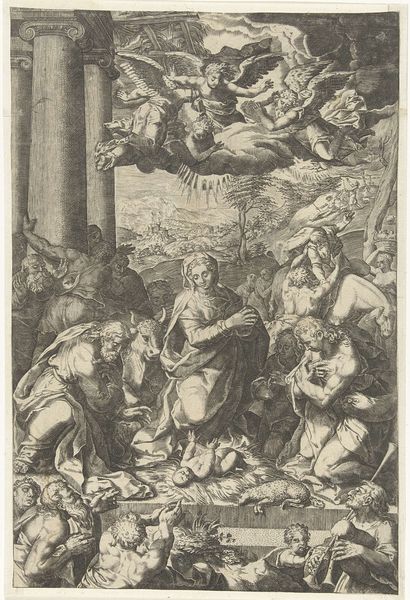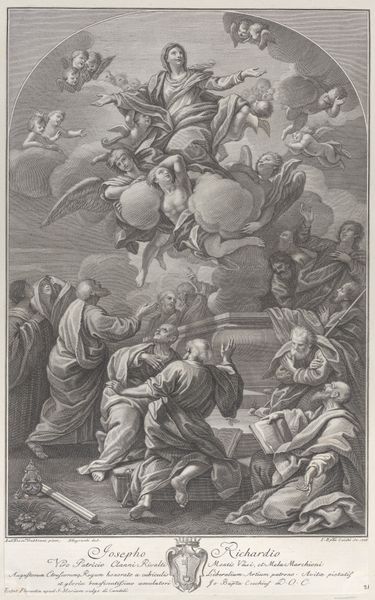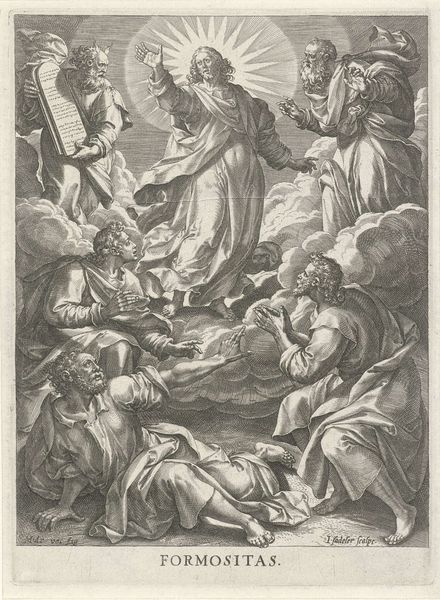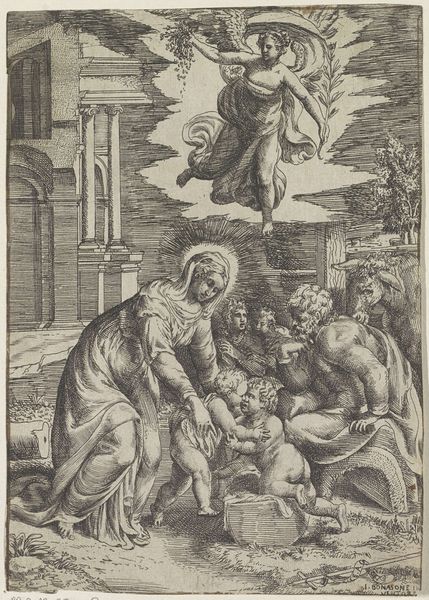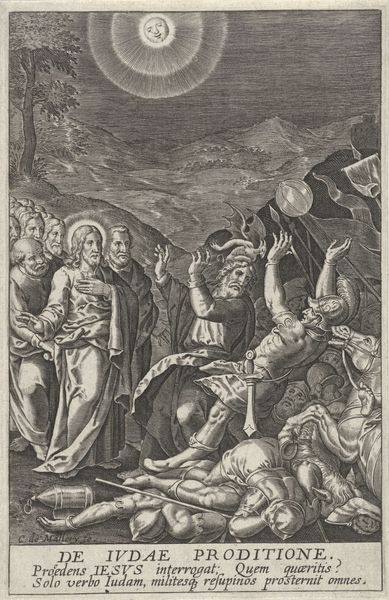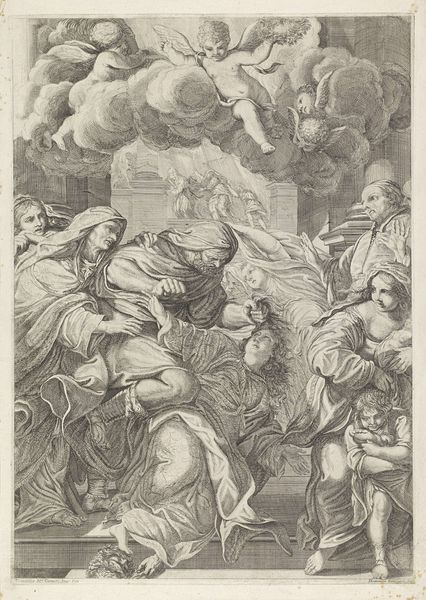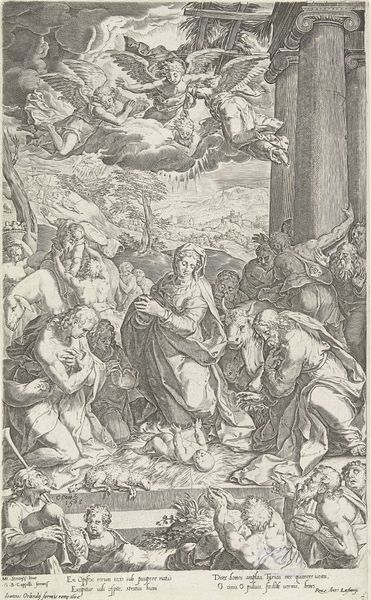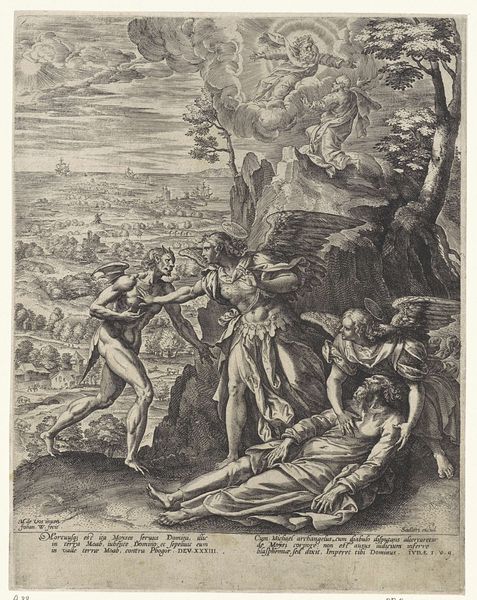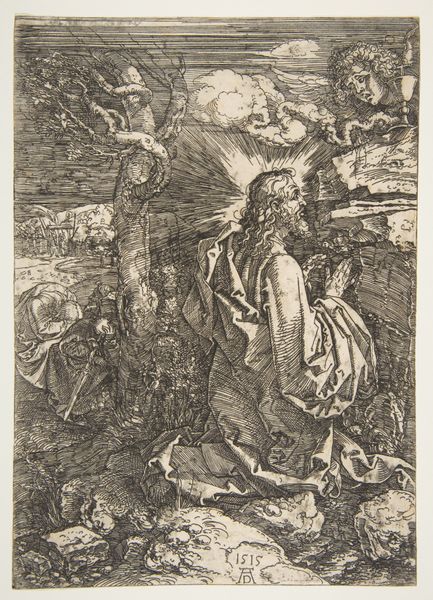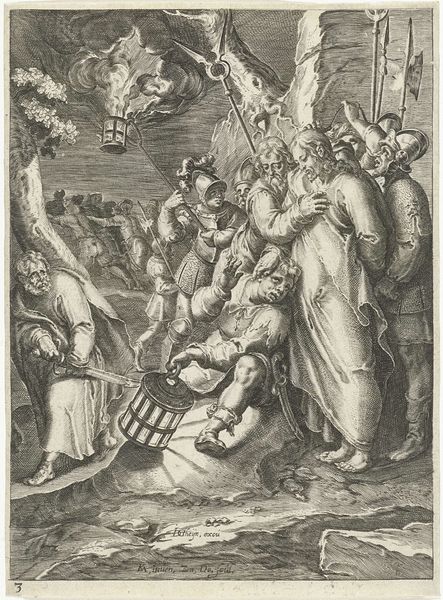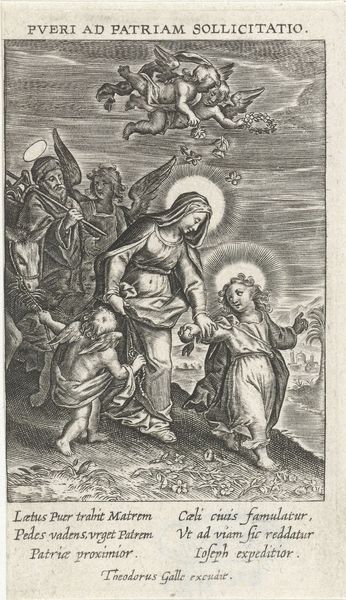
print, intaglio, engraving
#
portrait
#
baroque
# print
#
intaglio
#
old engraving style
#
figuration
#
line
#
history-painting
#
engraving
Dimensions: height 485 mm, width 322 mm
Copyright: Rijks Museum: Open Domain
Curator: This intaglio print, "The Return of the Holy Family from Egypt," likely made between 1592 and 1610, is attributed to Cornelis Galle I. The work, rendered in engraving, is currently held here at the Rijksmuseum. Editor: It strikes me as a surprisingly dynamic scene. Even within the rigidity often present in the line-based Baroque aesthetic, the print feels full of movement, of narrative tension. What is the piece telling us? Curator: Well, let's consider the socio-political forces that shaped such a depiction. Galle was operating in a period of Counter-Reformation, and images like this served a powerful public role in reaffirming Catholic doctrine, particularly surrounding the Holy Family as an idealized unit. Editor: Indeed. It also seems a reinforcement of gendered power. Look at Mary's downturned gaze. It evokes a sense of piety and sorrow, perhaps alluding to future suffering, while also subtly reinforcing female subservience. And there's the Christ Child being led, further pushing this line of control... Curator: The politics of imagery, absolutely. The angels almost seem like propagandistic cheerleaders hovering above. Their presence is meant to lend divine approval to the family’s journey but consider the audience: This isn’t simply a portrayal of a biblical scene. This artwork functions to reinforce societal structures of power and obedience to religious authority. Editor: It speaks to the art’s institutional and broader social purpose during its time of production and consumption, and really asks who the piece intended to include in its narrative of hope, return and divinity. Thanks, that gave me something to think about. Curator: Exactly. Analyzing it this way makes its statement more potent for us today.
Comments
No comments
Be the first to comment and join the conversation on the ultimate creative platform.
